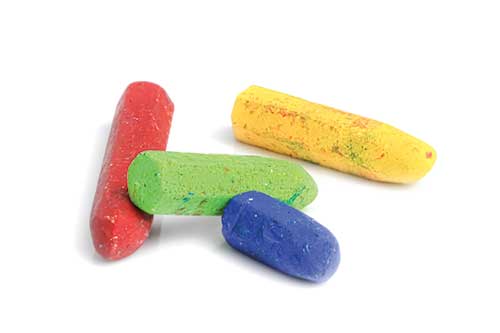Drawing Patients to Healing
Posted on June 5, 2025 by Cassandra Andrews

“It is proven that if people do art often that is meditative and spiritual, they remember better, they have a sense of purpose, and it is easier for them to rest.” — Art Therapist Margaret Wielbut

Chemotherapy is a powerful treatment for cancer. Coloring can help, too.
On a path to healing acute injuries and chronic illnesses, multidisciplinary teams across USA Health’s hospitals and treatment centers seek to engage the whole patient — and often their closest family members.
Many times, that process goes beyond the clinical to include the creation of art, an evidence-based practice that can contribute to faster recovery times and stress reduction, among a myriad of benefits for patients.
At the USA Health Mitchell Cancer Institute, cancer patients find unexpected comfort in the therapeutic power of art. Margaret Wielbut, a trained art therapist, has introduced an innovative program that blends creativity with emotional support, providing patients with a unique way to process their treatment journey.
Steps away at USA Health Children’s & Women’s Hospital, Mapp Child & Family Life Program staff member Lorie Evans uses therapeutic art concepts to provide an alternative focus for some patients during painful procedures. She also involves patients, their parents and siblings in creative artistic pursuits that can promote coping and healing.
“To me, art therapy is the perfect marriage between art and psychology,” says Wielbut.
“It is proven that if people do art often that is meditative and spiritual, they remember
better, they have a sense of purpose, and it is easier for them to rest.”
Wielbut, originally from Poland, has a master’s degree in art therapy. She has long
believed in the profound connection between art and healing. After moving to the Gulf
Coast, she saw an opportunity to bring her passion for art therapy to the Mitchell
Cancer Institute. Her mission was simple: Help cancer patients find a creative outlet
that eases their emotional burdens and gives them a renewed sense of purpose during
their treatments.
The program, funded by The Zoe Foundation, has been a resounding success. Each week,
cancer institute patients are invited to participate in art sessions during their
chemotherapy infusions. Wielbut brings art supplies and offers project ideas based
on themes from nature, such as creating landscapes or using found objects in artwork.
Through art, patients can process complex emotions, reduce stress and experience a sense of accomplishment. Research has shown that art therapy can lead to significant improvements in mental health for cancer patients, with many experiencing reduced anxiety, depression and fatigue.
More than a decade ago, Dr. Matilde Tellaetxe Isusi Sherman ’98, an instructor in USA’s art and art history and biomedical sciences departments, worked with oncologists at the cancer institute to bring art therapy concepts to those battling cancer. Since 2019, she has taught a special class to psychology and art students on creative arts and healing. After earning a medical degree and Ph.D. in microbiology and immunology in Leioa, Spain, Tellaetxe Isusi Sherman received a Bachelor of Fine Arts from South. She combined her passions for art and immunology and now trains students to help others through art therapy.
“Patients going through any sort of illness, anything that is chronic, there is a suspicion that the immunological system is not working well,” Tellaetxe Isusi Sherman says. “Normally, this immunological system may not be working well because the system is faulty or the individual is under tremendous stress. What art therapy does is allow a patient to express the deep emotions that can be triggered in the stress.”
Specifically, she explains, the process of art making can activate the parasympathetic nervous system — which allows us to relax. “It really is not about making a major piece of art. It’s not the technique. It’s the process of picking up the pen and picking out colors and allowing the person to express him- or herself.”
At Children’s & Women’s Hospital, Evans has discovered that taking time to make art can be just as important for parents and siblings as it is for sick and injured patients: “Moms can relax — just slightly — when they are painting or coloring. Some have told me they haven’t done those things since they were in school.”
In addition to enjoying Evans’ therapeutic art sessions, young patients at Children’s & Women’s Hospital also have the opportunity to create art through an artist-in-residency program with the Eastern Shore Art Center in Fairhope. Once a month, an artist visits the hospital in Mobile and works with patients to make original pieces. Some of that artwork recently hung in hospital hallways.
Beyond the personal benefits for patients and families, the artwork created at chemotherapy sessions and during quiet moments in hospital rooms contributes to a more positive, vibrant atmosphere within the cancer institute and the hospital. The art seems to help transform the energy in the clinical spaces, offering a sense of peace and light.
At the Mitchell Cancer Institute, Wielbut is committed to expanding the art therapy program even further. She believes art has the power to connect people, foster a sense of community and create an environment of healing that extends beyond the treatment room.
“If you do something that is interesting,” she says, “it’s contagious.”
Click here to view the current issue of South Magazine


